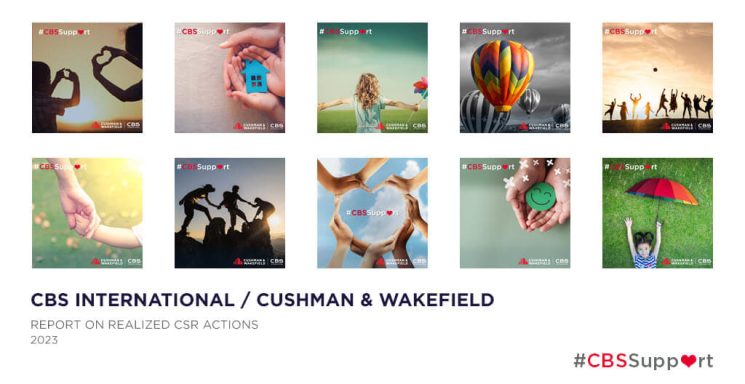
Diverse workforce in the workplace
With so many different generations in one workplace - the work culture has never been more diverse.
With so many different generations in one workplace – for the first time in history we see four generations working side by side (Baby Boomers, Generation X, Millennials and First of Generation Z) – the work culture has never been more diverse. Employees of many generations now share a workspace. But that doesn’t necessarily mean they share the same expectations about how that workspace should be organized.
All employees bring their unique life experiences and perspectives to the office, which is partly shaped by their generation. The workplace includes several age groups and demographic categories. The era in which you are born helps unify your values, along with the way you communicate and approach your career. Despite similar work ethic, this can lead to “generational gaps” between the groups.
Generational differences in the office usually become a challenge when communication styles and expectations do not match. Employers can overcome these challenges by using flexible tools and workplace models that can adapt to different work styles.
With Boomers planning to stay and Generation Z eager to enter the job market, multi-generation jobs are a “new normality” for the foreseeable future. This can be a challenge for employers to embrace generational diversity. A flexible workplace is the future of work ambience and will have to benefit all generations.
Baby boomers: born between 1946 – 1964
- Often shortened to boomers, are the demographic cohort for the generation born after the second world war
- More men attended college
- Retired or approaching retirement age
Growing up working in traditional jobs, they started their careers without the technology we take for granted today.
The youngest Boomers are still in their late 50s and are in the workforce, accounting for 25% of the workforce (65% of them plan to work after age 65).
They are usually loyal employees and often have decades of experience and knowledge. This makes them invaluable and reliable team members. Growing up long before the SMS or email, they prefer live meetings.
Many Boomers gravitate towards more traditional jobs, less inclined to use options such as flexible jobs or a “shared desk”.
Generation X: born between 1965 – 1980
- They were not born immediately after the war and were not exposed to modern technology as children
- Appreciate the balance between work and private life
Generation X craves flexible work. They are in the middle of their careers and are often in management positions and are becoming decision makers.
This generation grew up with the evolution of the computer, but long before smartphones and the Internet. Although they were older when technology became as dominant in business as it is today, they are very technically savvy.
With experience in older and newer office settings, Generation X feels just as comfortable in face-to-face interaction as it does in digital communication. They generally prefer any form of communication at their disposal that is most effective for the given task.
Due to family obligations and their desire for autonomy and control, hybrid work is increasingly favored by Generation X.
Generation Y – Millennials: born between 1981-1996
- The peak of childhood in the early 2000s
- 39% have a degree or more
- More women attended college
- 53% of millennials currently live at home
Given their size and impact, it is almost impossible to analyze generations in the office without including millennials. The largest generation currently working is expected to make up 75% of the global workforce by 2025.
Millennials are the famous first generation that is heavily technology-oriented. They grew up with personal computers, using the Internet and smartphones in their early years. As such, majority of this generation prefers email, instant messaging, and text over live interactions and phone calls. This makes integrated workplace communication necessary.
Millennials also prefer work that is meaningful and collaborative. This is the generation that has helped introduce new trends in the workplace, such as table tennis, billiards or lazy bags. They also adopted more serious options such as shared desk policy, open space, and activity-based work.
Millennials also like a hybrid model of work, as well as agility in the way they work. They want control over their schedule and work tasks, with a good balance between work and private life. A Flexjobs survey found that 78% of millennials said flexible work options would make them more loyal to the company, while 70% would consider quitting work without flexible options.
While working from home, millennials had more challenges, unlike Generation X, probably a majority of this generation currently has young children. This emphasizes the need for all employees to be offered flexible options. It is also a reminder that many factors, and certainly not just generation, affect the needs of workers.
Generation Z: born between 1997-2012
- Most tolerant of diversity
- 5% of the total working population
- Adults with technology
Generation Z – Zoomers is the youngest generation in the current active workforce. This is the first generation of true “digital natives”. They have experienced computers, the internet and smartphones since birth or their earliest years. They are also getting employed with less work experience than the previous generation.
Zoomers are a generation that values diversity, social responsibility and meaningful work. They also like regular and constant feedback from their superiors.
They tend to work individually and to be self-directed. They usually want some flexibility in the way they do their job and in their working hours, which makes them the main candidates for agile work. They also like multitasking and working on multiple projects at once.
Since Generation Z values independence and independent work, they prefer their own business space, compared to the co-working spaces that millennials enjoy. Interestingly, 53% of Generation Z prefer live meetings instead of emails and online meetings.
The diversity of today’s workforce means that there is rarely just one approach to jobs.
Most company policies were created by Baby Boomers to reflect their own style of work – a standard day in the office with plenty of time to communicate live. The arrival of millennials has significantly reshaped structure of work days – they have been looking for things like flexible working arrangements and progressive jobs.
Employers who want to recruit and retain new generation of workers must have sophisticated new technology to offer. A recent survey showed that 16% of employees belonging to Generation Z and millennials have already resigned if they have not been given the appropriate technology to do the job, while 34% have turned down offers for jobs where they used outdated technological solutions in the company.
We can expect these numbers to grow as technology becomes more integrated into the office. If companies want to attract and retain top talent, the days of using old technological solutions are over.
But there is one important similarity that encompasses all generations, whether they are older or younger workers. Each generation to some extent prefers a flexible and agile work environment. And as the pandemic has made clear, the future is hybrid. Companies that offer flexible and hybrid workplace options are the ones most likely to succeed in today’s world.








